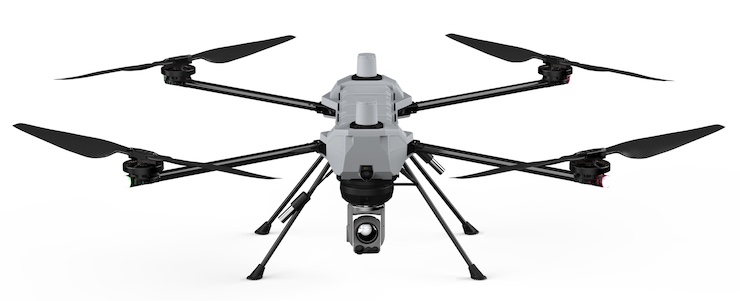Performance Drone Works (PDW) Wins Army Contract

In an effort to gain a tactical edge during World War I, British military scientists developed the first drones based on A.M. Low’s principles of radio technology. The success of using pilotless aircraft to deploy munitions spurred what would become the drone revolution. In the aftermath of the 9/11 attacks, the United States became the first nation to start regularly deploying combat drones. Drones like the Predator and Reaper became famous worldwide for helping the United States win the War on Terror. Today, the drone industry is one of the fastest-growing industries. While civilian and commercial drones have grown in popularity and demand, the military still represents the largest sector of the drone industry.
For years, the branches of the U.S. military have relied on large, costly drones or smaller, single-use drones that are also very expensive. As technology has progressed, the competition to develop small, inexpensive, single-use, or retrievable drones has intensified. There are hundreds of drone companies vying for military contracts, trying to prove that they have the best drones to place directly in the hands of soldiers. In response to the numerous development projects underway, the Department of Defense (DoD) released the Blue UAS standards that drones must meet to be used in military operations. These regulations ensure that a drone has met rigorous safety standards in all aspects of operation, including hardware and software, to prevent potential security breaches.
One company that has been awarded the DoD’s Blue UAS approval is Performance Drone Works (PDW), based out of Huntsville, Alabama. Founded in 2018, PDW initially set out to develop the best in FPV (First Person View) racing drones. However, it didn’t take long for the founders to recognize that their designs would be better suited for the field of defense. They shifted their focus to building a combat-ready, portable drone that would be easy for any soldier to use in the field. In September 2024, PDW announced that they had been awarded a contract for the Army’s Company Level sUAS Direct Requirement.
The U.S. Army announced the Company Level sUAS Direct Requirement in 2023. As stated in a release from the Congressional Research Service, “The U.S. Army is acquiring a family of small uncrewed aircraft systems (sUAS) for ground maneuver elements at the battalion level and below to provide real-time reconnaissance, surveillance, and target acquisition (RSTA) capabilities.” PDW’s C100 drone perfectly aligns with this requirement. Weighing only 21 lbs, the C100 can fit in a backpack and be ready to deploy in just a few moments.
It can gather data, provide situational awareness, has a maximum flight time of 74 minutes, and can support a payload of 10 lbs. But, as PDW CEO and co-founder Ryan Gury explains, it is the drone’s FPV racing inspiration that truly sets it apart. ” FPV is a whole new style of munition delivery where a pilot has very finite control of exactly where that munition can be placed and when that can be placed,” Ryan said. “You can stand off at a great while, identify targets, you can hit pieces of armor exactly where they’re vulnerable.” He went on to explain that PDW had received intel from generals in Ukraine stating that drones with FPV capabilities are “now out surpassing artillery and small arms for anti-personnel and anti-armor.”
The ultimate goal is to provide U.S. military forces with the tools necessary to succeed. This means having what they need to serve and protect while minimizing their own personal risks. Drones have proven themselves to be the ideal solution to meet this need. Now, with FPV combat drones like the C100, a soldier can operate as if they are right up close to an enemy while, in fact, they are safely out of harm’s way. “The world is witnessing the transformative power of quadcopters on the battlefield, whose unmatched agility, precision, and tactical versatility are revolutionizing modern warfare,” Ryan said. We have come a long way since the introduction of combat drones during World War I. As the landscape of modern warfare evolves, innovations like PDW’s C100 drone exemplify how technology is reshaping military operations. By enhancing situational awareness and precision, these drones not only empower soldiers on the battlefield but also redefine the strategies of engagement in defense.
|